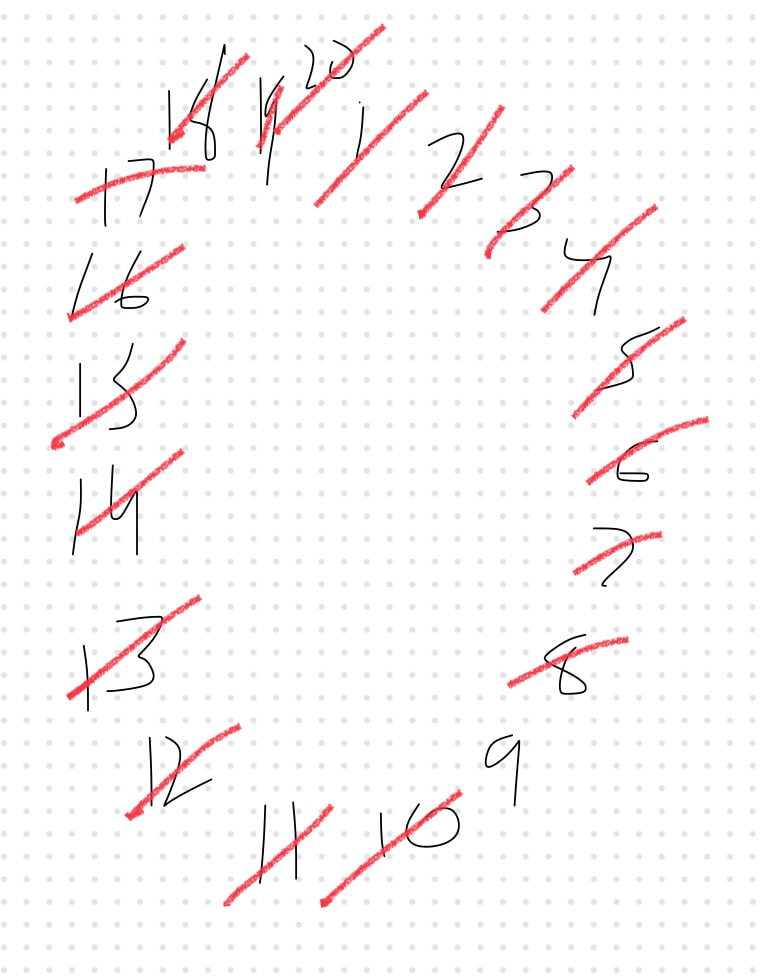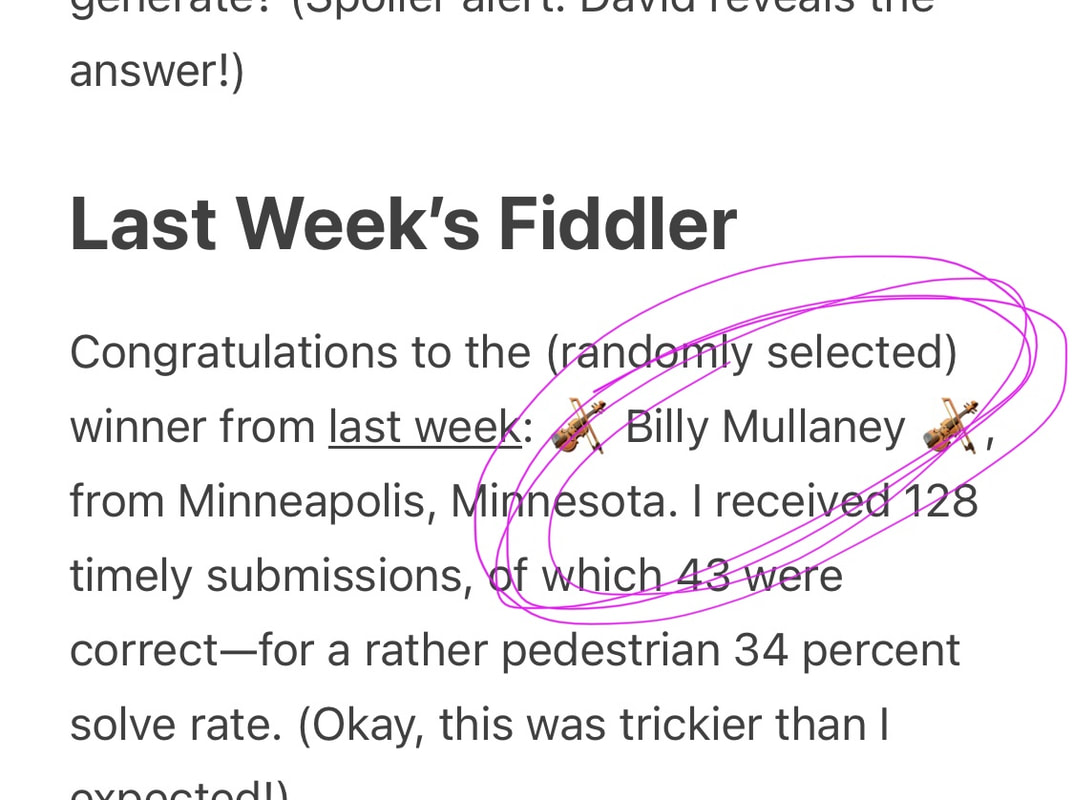Fiddler Solutions
MARCH 30, 2024 (been a while...)
JULY 31, 2023
(another inelegant solution by hand...)
JULY 21 2023
Oh hey it's the Josephus problem!
Oh hey I won!!
JUNE 16, 2023
After trying fruitlessly to find a pattern when constructing 1-digit and 2-digit middle-square networks, I asked my DAD, who is an Excel wizard, to see if he could make a formula that would:
And he did! Here's what we found:
- Take every four-digit number (10^4 = 10,000) and square it
- Make a new cell with the middle-square parameters (i.e. a number composed of the middle four digits, including extra zeroes prepended in the case the squared value is less than eight digits)
- Iterate this formula for every value until
- There is a match
- Count the number of steps until there is a match
And he did! Here's what we found:
- It was clear that all the top hits terminated in a loop of 2100-4100-6100-8100-2100-...
- The most common transitions into that loop seemed to came from 2900 --> 4100, and 6900 --> 6100
- The "latest" instance of 2900 was with 6239
- In fact 6239 returns 9251, which is another top long-running candidate. I guess this shouldn't be surprising that the highest long-string candidates are all values that feed into the same "branch", and therefore the one eventually returns the other.
- Using this intuition and the way my dad's spreadsheet distributed the rows, we could search "2900" to confirm visually that 6239 reaches the loop latest
- By counting the number of values in the sequence beginning with 6239, we get 111 unique values
- The last (111th) unique value is 2100, followed by 4100 which was also the 108th value
MAY 29, 2023
MAY 23, 2023
HEY WOW I WON!!
https://fivethirtyeight.com/features/can-you-game-the-currency-exchange/
(I wish it was for a more elegant solution than a brute-force probability tree...)
(I wish it was for a more elegant solution than a brute-force probability tree...)
APRIL 14, 2023

If I make an equilateral triangle ABC with side length 1, I can assign each vertex a separate color--in my diagram A is blue, B is green, and C is red. When I then construct another such equilateral triangle BCD, D must be the same color as A (in this case blue), and this is true even if B was red and C was green. Due to this "forcing" property of the ABDC quadrilateral, I call these constructions *power rhombi*.
If we then construct another power rhombus AEGF where AEF is an equilateral triangle (E and F are red and green, not necessarily respectively) and EFG is an equilateral triangle (forcing G to be the same color as A and D), and tilt* the power rhombi off their shared vertex A in such a way that D and G are one unit away from each other, we end up with a kind of oblong pentagon that must have at least one pair of points 1 unit apart with the same color assignations.
*The triangle ADG in this pentagon is isosceles with a base 1 and legs sqrt(3), so using the law of cosines the angles ADG and AGD are about 73.22 degrees, which means angle DAG (i.e. the angle formed between the long diagonals of the power rhombi) is about 33.56 degrees.
If we then construct another power rhombus AEGF where AEF is an equilateral triangle (E and F are red and green, not necessarily respectively) and EFG is an equilateral triangle (forcing G to be the same color as A and D), and tilt* the power rhombi off their shared vertex A in such a way that D and G are one unit away from each other, we end up with a kind of oblong pentagon that must have at least one pair of points 1 unit apart with the same color assignations.
*The triangle ADG in this pentagon is isosceles with a base 1 and legs sqrt(3), so using the law of cosines the angles ADG and AGD are about 73.22 degrees, which means angle DAG (i.e. the angle formed between the long diagonals of the power rhombi) is about 33.56 degrees.
















